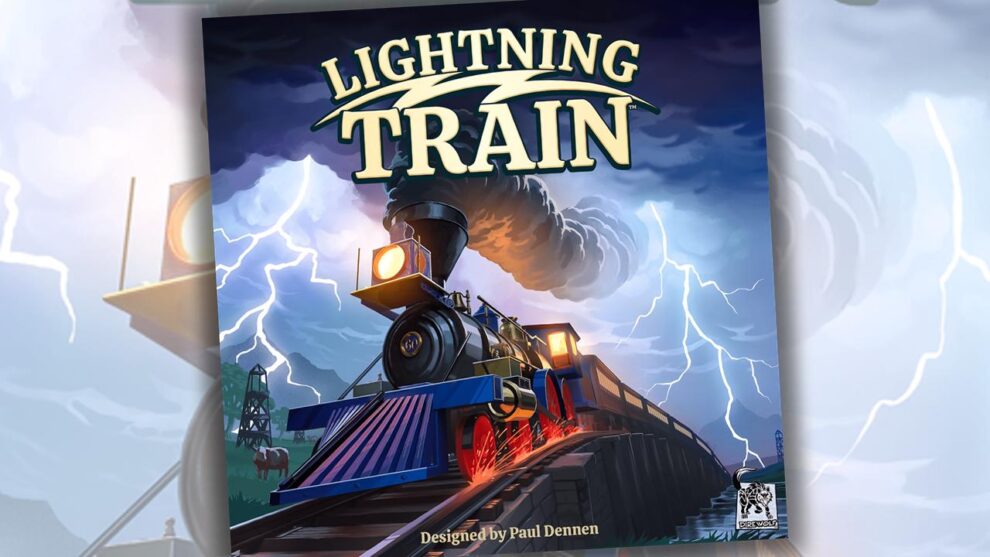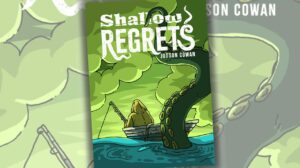Disclosure: Meeple Mountain received a free copy of this product in exchange for an honest, unbiased review. This review is not intended to be an endorsement.
From the moment I heard the title Lightning Train, I knew that I wanted to play it. I’m the kind of guy who judges game boxes by the cover, and the image of a steam locomotive riding from (or with?) a raging thunderstorm sparked an immediate interest for me. It wasn’t until later that I found out the designer was Paul Dennen, responsible for the Clank! series of games. Does the gameplay match the perceived awesomeness from the package? Let’s find out.
Lightning Train Overview
Lightning Train is a bag-builder game, using tiles instead of the cards that you might find in a traditional deck-building game like Clank!. Players take turns pulling tiles from their bag each turn, drawing contracts, money, and train cars to be spent on the various actions for their company. The goal is to score the most points by delivering goods across the shared rail network and—hopefully—contributing towards the transcontinental railroad, which grants a bevy of points to the companies that do so.
Each turn consists of two phases. In the Operations Phase, players can build rail lines using train tiles, make deliveries across completed lines, play any Action or Upgrade cards, spend their money, and assign trains to the rail yard to take a slew of other actions. Once a player has exhausted their resources, they enter the second phase by emptying the boarding area on their player board and refilling the empty spaces by taking tiles from their bag.
I don’t want to get into the weeds on the details for every single action, but I want to mention the game’s namesake—the lightning train. Whenever you earn or purchase a lightning train icon, you immediately get an extra train token into your boarding area. This allows you to go above and beyond, yielding explosive turns by having extra tokens to work with since trains are used to conduct nearly every action in the game.
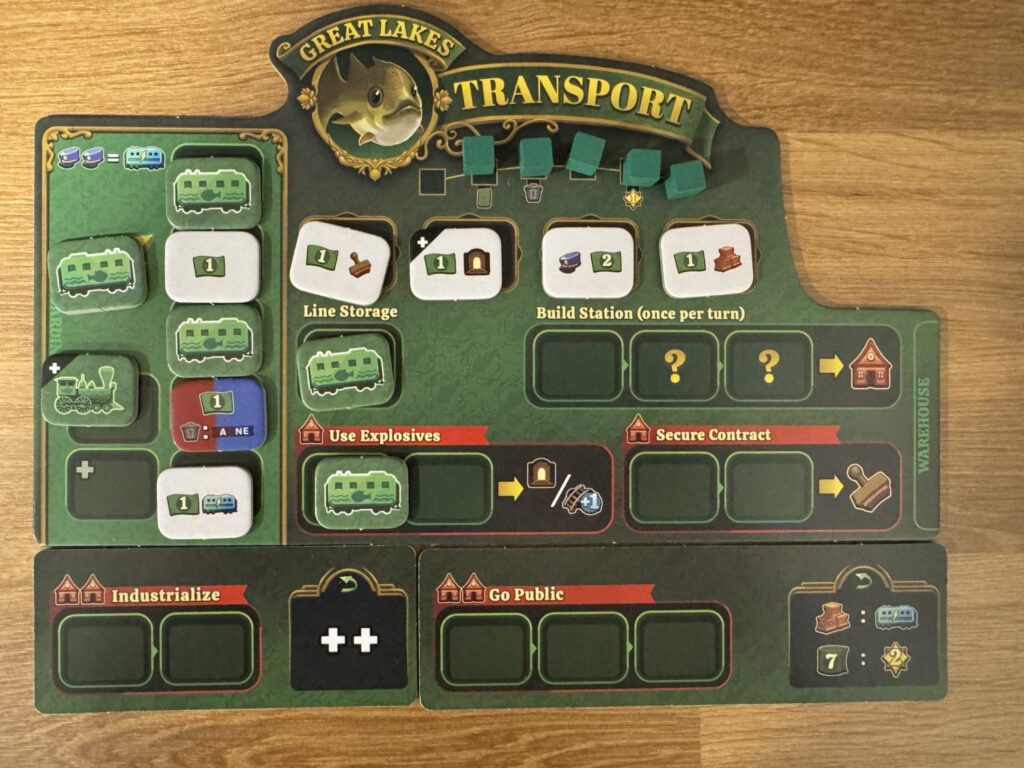
Games of Lightning Train start with a limited scope. Part of the reason for this is due to the building rules—you can only build rail lines that have a direct connection to either the starting cities on the eastern seaboard, a city where you have a station, or one of your existing lines. A key rule here is that you can build off your own stations, meaning that players will eventually be sprawling across the United States in webs of train tracks, hoping to corner markets and be a contributor to the transcontinental railroad.
But you won’t be able to just build anywhere that you want. Players must possess a contract—either from a tile or by spending trains—to build stations or rail lines in specific regions on the board. Everybody starts with access to the same three contract tiles, which leads to early competition along the eastern edge of the country. Money can be spent on market tiles that get replaced anytime somebody purchases one, and contracts are part of that pool. Stagnant tiles also drop in value if left untouched.
Every round, a new production card is revealed, placing additional goods on the board. When goods are delivered to a station, everybody with contributing rail lines scores points along with the station owner. Stations can only accept a good one time, so timing becomes critical for delivering hot goods to a different station before its owner can complete the requisite rail line to span the distance.
Lightning Train also features a Mergers and Acquisitions mini-expansion. This cordons off certain rail lines belonging to private companies. Instead of paying trains to build the rail line, players can instead pay money. Although they won’t receive points for the transaction, they can still build a rail line on their turn.
The end game is triggered when the Transcontinental Railroad is established, at which point players finish the current round and play one more round before scores are tallied. Alternatively, if the coast-to-coast railroad is never completed, the game ends after the 12th round.
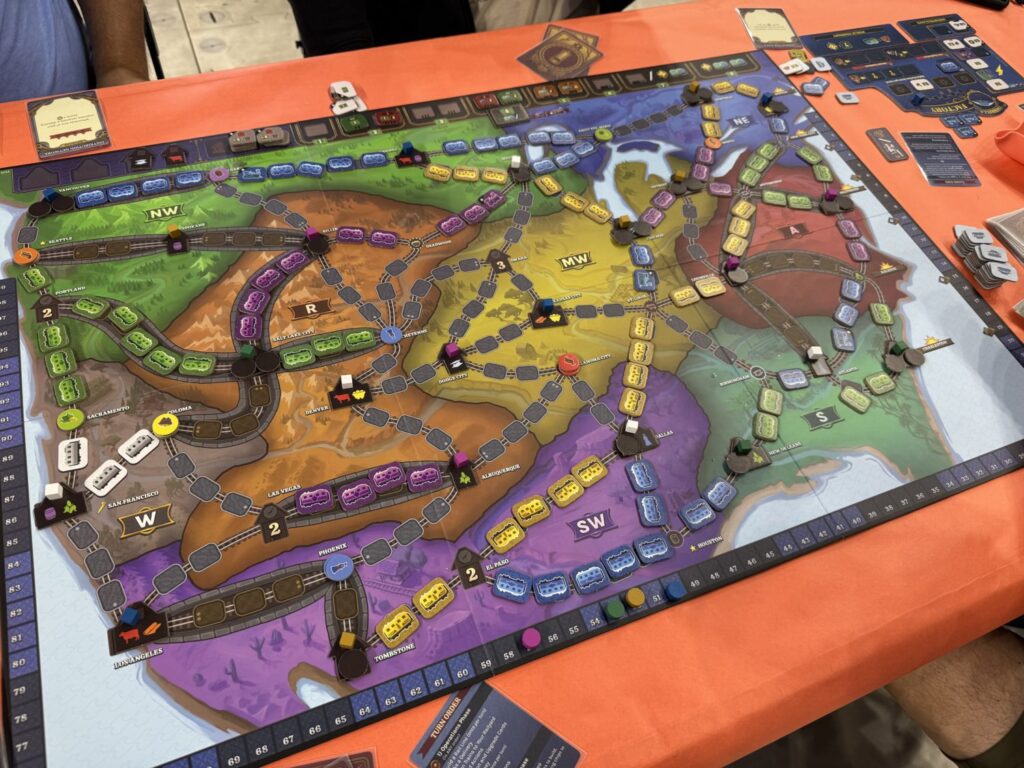
Lightning Train: Eight Chuggas before the Choo Choo
What makes Lightning Train such a fulfilling experience is that, as an engine builder, it has a satisfying ramp as players build up the tokens in their bags. The progression feels constant and stable in the sense that I never felt as though my actions were stalling. My score might have been, but that was because I was focused on setting up a big swing by having a ton of tiles contribute to the Transcontinental Railroad. Skyrocketing up the scoring track when that happened left me entirely gleeful while my opponents’ mouths were left hanging open.
On the subject of ramp, I also appreciate that the focus on the game is very direct when the game begins. Everybody starts with the same pool of resources, building railroads on the same part of the country, working towards the same goals. It doesn’t take long for the bags to build into unique strategies based on what the bag is prodding you towards with its offerings. Some players focused on acquiring high-cost tiles that featured powerful icons, while others tried to buy up as many tiles with plus signs as possible. Tiles with plus signs slot into a separate area of your boarding area, essentially giving you more tiles to work with during your turn. Couple those with lightning trains, and you’ll be rolling in trains by the endgame.
Turns are generally fast early on, but do get lengthier as the number of available actions and decision points increases. The game turns from a light railroad builder to a complex balancing act of sequencing and resource allocation. The final turn always feels pivotal, especially if there is a close race at the top end of the scoring track. After the game is over, players can conduct final deliveries of goods one last time, potentially tilting the scales in their favor.
I was a bit confused that the cards were so scarce. When you reach 19 points, you have the option to draw a card from either of the two card decks—assuming you have a card in your hand—and discard a card. But I experienced instances where players initially drew only endgame scoring cards and never saw an upgrade card come their way, and vice versa. Theoretically, these should balance out scorewise, but an early upgrade card felt very powerful to have in play. I expected cards to be more plentiful.
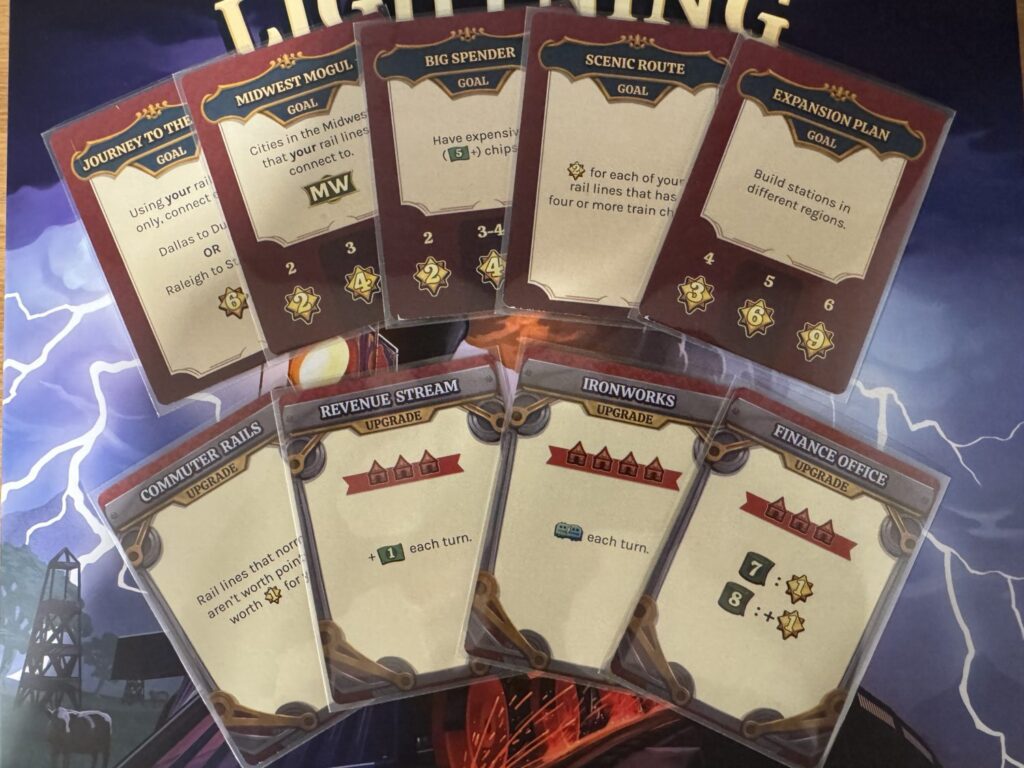
What I liked most about Lightning Train is that success is often directly impacted by timing. Turns that subvert expectations—such as building more than one rail line in a turn or intercepting an anticipated delivery by placing a like-minded station en route—lead to many moments of feeling like you’re breaking rules to your benefit. There is also a clever catch-up mechanic that is limited so that the leaders don’t feel cheated for being far in front while still ensuring that players towards the back get a leg up.
Lightning Train is a tight game of railroad superiority where you can tangibly feel your company getting stronger as the game continues. Choices are plentiful and strategies are open-ended so that you can play the game in a way that makes the most sense for your personal enjoyment. And, as expected, completing the Transcontinental Railroad is the biggest moment in the game, giving us the smallest glimpse into what it might have been like to witness the feat back in 1869.
Only we can do it from the comfort of our living rooms.


